When I put together my ranking of the top 100 prospects in baseball each winter, I base it on the overall potential I see from each player over the course of his first six years of service in the majors -- the length of time he'd spend with his parent club before reaching free agency -- and apply a discount to players who are further away from the majors. The prospects' potential production strictly in 2016 is only a minor consideration, because weighing it more heavily would lead to a list more populated with low-ceiling players rather than the potential All-Stars I think have more asset value.
To balance that out, I produce another list, this one ranking the top 25 prospects in baseball based solely on how much value I think they might produce in 2016. This list includes one of my least favorite kinds of forecasting (because I don't do it well and have no idea how to do it well): estimating playing time for the next seven months. So you're getting my best guesses -- guesses is the operative term here -- for probably 30 or 40 players underlying the rankings below and my decisions on which players to include. If a prospect you like isn't listed here, it might be only because I don't think he gets the playing time in 2016 to make the list.
I don't rank players with significant professional experience outside of MLB as prospects, so Kenta Maeda (age 28), Byung-ho Park (29), and Hector Olivera (31) do not appear here or on my Top 100. Maeda seems set to be part of the Dodgers' rotation, while Park should be the Twins' starting first baseman, and Olivera may be Atlanta's everyday left fielder after attempts to play him in the infield didn't work out.
With that, let's look at the top 25 impact prospects for 2016:
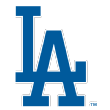 1. Corey Seager, SS/3B, Los Angeles Dodgers: He's the best prospect in baseball, and he has an actual, bona fide grip on an everyday job. Seager is the odds-on favorite for the NL Rookie of the Year award, and after his huge debut in September, expectations are justifiably high.
1. Corey Seager, SS/3B, Los Angeles Dodgers: He's the best prospect in baseball, and he has an actual, bona fide grip on an everyday job. Seager is the odds-on favorite for the NL Rookie of the Year award, and after his huge debut in September, expectations are justifiably high.
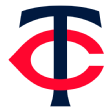 2. Byron Buxton, CF, Minnesota Twins: The Twins' outfield is still a bit unsettled, with Miguel Sano moving to right and Eddie Rosario's two walks per month in left, but Buxton should at least have the edge on winning the job in center because his defense would help the club immediately and because the majors might be the best place for him to continue to develop as a hitter. He might not crack a .300 OBP this year, but he'll add a lot of value with his glove and on the bases.
2. Byron Buxton, CF, Minnesota Twins: The Twins' outfield is still a bit unsettled, with Miguel Sano moving to right and Eddie Rosario's two walks per month in left, but Buxton should at least have the edge on winning the job in center because his defense would help the club immediately and because the majors might be the best place for him to continue to develop as a hitter. He might not crack a .300 OBP this year, but he'll add a lot of value with his glove and on the bases.
 3. Steven Matz, LHP, New York Mets: Matz is the Mets' fourth starter right now, but seems likely to pitch better than most fourth starters when he's on the mound. He has never had an ERA over 3 at any level, and he's never reached 150 innings in any regular season due to a long list of injuries. With Zack Wheeler coming back from Tommy John surgery and the ageless Bartolo Colon on the roster, the Mets can take it easy with Matz and focus on the quality he provides while giving him time off as needed for the inevitable injuries.
3. Steven Matz, LHP, New York Mets: Matz is the Mets' fourth starter right now, but seems likely to pitch better than most fourth starters when he's on the mound. He has never had an ERA over 3 at any level, and he's never reached 150 innings in any regular season due to a long list of injuries. With Zack Wheeler coming back from Tommy John surgery and the ageless Bartolo Colon on the roster, the Mets can take it easy with Matz and focus on the quality he provides while giving him time off as needed for the inevitable injuries.
 4. Jose Berrios, RHP, Minnesota Twins: Berrios could have come up to the majors last September, but the Twins chose to shut him down after a successful season; he threw 166 innings total split between Double- and Triple-A. He has the three pitches and control to help their rotation now, better than Tommy Milone, and perhaps better than Tyler Duffey based on the latter's stuff and history prior to 2015.
4. Jose Berrios, RHP, Minnesota Twins: Berrios could have come up to the majors last September, but the Twins chose to shut him down after a successful season; he threw 166 innings total split between Double- and Triple-A. He has the three pitches and control to help their rotation now, better than Tommy Milone, and perhaps better than Tyler Duffey based on the latter's stuff and history prior to 2015.
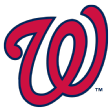 5. Trea Turner, SS, Washington Nationals: This could be too optimistic. Nats manager Dusty Baker loves his veterans, and at shortstop, he could stick Danny Espinosa, a poor defender there who can hit a mistake but has to work to get to a .300 OBP, over Turner coming out of spring training. This would be foolish, especially for a team in the hunt that needs every win it can get. Espinosa has more power, but Turner is a better defender, he's faster, and he's more likely to get on base.
5. Trea Turner, SS, Washington Nationals: This could be too optimistic. Nats manager Dusty Baker loves his veterans, and at shortstop, he could stick Danny Espinosa, a poor defender there who can hit a mistake but has to work to get to a .300 OBP, over Turner coming out of spring training. This would be foolish, especially for a team in the hunt that needs every win it can get. Espinosa has more power, but Turner is a better defender, he's faster, and he's more likely to get on base.
 6. Colin Rea, RHP, San Diego Padres: He has to be in the Padres' rotation given the other options: Brandon Maurer, who can't stay healthy and lacks an effective breaking ball; Carlos Villanueva, who hasn't started a game since 2014 and has a career 5.00 ERA in the rotation; or the oft-injured Robbie Erlin, who has been homer-prone even at Petco Park, and ineffective in Triple-A. Rea is a command right-hander, probably a No. 4 starter at the end of the day, but can sink the ball a little and miss just enough bats to be better than any of those other options.
6. Colin Rea, RHP, San Diego Padres: He has to be in the Padres' rotation given the other options: Brandon Maurer, who can't stay healthy and lacks an effective breaking ball; Carlos Villanueva, who hasn't started a game since 2014 and has a career 5.00 ERA in the rotation; or the oft-injured Robbie Erlin, who has been homer-prone even at Petco Park, and ineffective in Triple-A. Rea is a command right-hander, probably a No. 4 starter at the end of the day, but can sink the ball a little and miss just enough bats to be better than any of those other options.
 7. Trevor Story, SS, Colorado Rockies: Story should be the Rockies' shortstop if Jose Reyes is suspended for any significant time, as he's the best defensive shortstop they have and should at least hit for some power with an OBP probably in the low .300s. Their other options at the position are all utility infielders, and Story has a chance to remain a starter there for a few years if he gets the chance.
7. Trevor Story, SS, Colorado Rockies: Story should be the Rockies' shortstop if Jose Reyes is suspended for any significant time, as he's the best defensive shortstop they have and should at least hit for some power with an OBP probably in the low .300s. Their other options at the position are all utility infielders, and Story has a chance to remain a starter there for a few years if he gets the chance.
 8. Jonathan Gray, RHP, Rockies: Gray is in the rotation, but his stuff has backed up since college, and pitchers with this little deception are a bad fit for Coors Field, so while he'll likely get a lot of major-league time, I'm not sanguine about his ability to produce.
8. Jonathan Gray, RHP, Rockies: Gray is in the rotation, but his stuff has backed up since college, and pitchers with this little deception are a bad fit for Coors Field, so while he'll likely get a lot of major-league time, I'm not sanguine about his ability to produce.
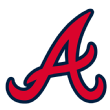 9. Aaron Blair, RHP, Atlanta Braves: The big sinkerballer performed at every level, including the difficult assignment of pitching for Reno in Triple-A before the Arizona Diamondbacks traded him to the Braves in the Shelby Miller deal, a move that should accelerate Blair's journey to a big-league rotation spot. If Blair gets 32 starts in Atlanta, he'll probably end up as one of their top three starters in terms of value produced, and that would allow them to play around with some of their other arms, like trying Mike Foltynewicz in the bullpen.
9. Aaron Blair, RHP, Atlanta Braves: The big sinkerballer performed at every level, including the difficult assignment of pitching for Reno in Triple-A before the Arizona Diamondbacks traded him to the Braves in the Shelby Miller deal, a move that should accelerate Blair's journey to a big-league rotation spot. If Blair gets 32 starts in Atlanta, he'll probably end up as one of their top three starters in terms of value produced, and that would allow them to play around with some of their other arms, like trying Mike Foltynewicz in the bullpen.
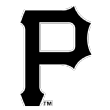 10. Tyler Glasnow, RHP, Pittsburgh Pirates: Glasnow's stuff would play in the majors right now, and his command has improved enough that I'd much rather see him in the rotation than Ryan Vogelsong, who is 38 and has been below replacement level over the past three seasons. It seems as if Vogelsong will get a few turns, but if he pitches the way he did in 2015, we should see Glasnow soon, and the 6-foot-8 righty will miss enough bats to generate value for the Pirates as he continues to develop.
10. Tyler Glasnow, RHP, Pittsburgh Pirates: Glasnow's stuff would play in the majors right now, and his command has improved enough that I'd much rather see him in the rotation than Ryan Vogelsong, who is 38 and has been below replacement level over the past three seasons. It seems as if Vogelsong will get a few turns, but if he pitches the way he did in 2015, we should see Glasnow soon, and the 6-foot-8 righty will miss enough bats to generate value for the Pirates as he continues to develop.
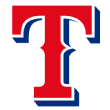 11. Joey Gallo, 3B/LF, Texas Rangers: Josh Hamilton is hurt -- please, try to contain your surprise -- and while the Rangers are shopping for short-term replacements in left, the opening can only help Gallo, who needs to spend more time in Triple-A to work on making contact within the zone but could end up recalled so the Rangers can take advantage of his power. Gallo has already made huge adjustments just since signing in his ability to recognize strikes and keep his swing-and-miss rate at an acceptable level, but he also has needed time to adjust at each stop. He has 40-homer power if he can make enough contact.
11. Joey Gallo, 3B/LF, Texas Rangers: Josh Hamilton is hurt -- please, try to contain your surprise -- and while the Rangers are shopping for short-term replacements in left, the opening can only help Gallo, who needs to spend more time in Triple-A to work on making contact within the zone but could end up recalled so the Rangers can take advantage of his power. Gallo has already made huge adjustments just since signing in his ability to recognize strikes and keep his swing-and-miss rate at an acceptable level, but he also has needed time to adjust at each stop. He has 40-homer power if he can make enough contact.
 12. Max Kepler, OF, Twins: Kepler has a couple of paths to playing time, so while he doesn't have a firm grip on a job right now, it's fair to project at least 400 at-bats or so for him. Only Miguel Sano has a lock on a job in the Twins' outfield (probably in right field), and even if he's terrible on defense, his bat needs to be in that lineup and there's nowhere else to put him. Buxton is the leading contender to start in center field but could return to Triple-A if the Twins are concerned about his bat; and left fielder Eddie Rosario had a .289 OBP last year and is better cast as an extra outfielder. Kepler isn't the defender Buxton is, but he can play center, and he should be comparable on defense to Rosario in left but with a better approach and just as much power.
12. Max Kepler, OF, Twins: Kepler has a couple of paths to playing time, so while he doesn't have a firm grip on a job right now, it's fair to project at least 400 at-bats or so for him. Only Miguel Sano has a lock on a job in the Twins' outfield (probably in right field), and even if he's terrible on defense, his bat needs to be in that lineup and there's nowhere else to put him. Buxton is the leading contender to start in center field but could return to Triple-A if the Twins are concerned about his bat; and left fielder Eddie Rosario had a .289 OBP last year and is better cast as an extra outfielder. Kepler isn't the defender Buxton is, but he can play center, and he should be comparable on defense to Rosario in left but with a better approach and just as much power.
 13. Josh Bell, 1B, Pirates: Bell has hit for average with high OBPs the past two years, showing less power than expected but outstanding contact rates. He'd be ready for the majors right now if he were within spitting distance of average on defense. The Pirates have a cast of castoffs at first base right now, none of whom is likely to come close to what Bell would produce at the plate, even if Bell would hit only 8-10 homers in a full season right now.
13. Josh Bell, 1B, Pirates: Bell has hit for average with high OBPs the past two years, showing less power than expected but outstanding contact rates. He'd be ready for the majors right now if he were within spitting distance of average on defense. The Pirates have a cast of castoffs at first base right now, none of whom is likely to come close to what Bell would produce at the plate, even if Bell would hit only 8-10 homers in a full season right now.
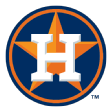 14. Tyler White, 1B, Houston Astros: White is behind A.J. Reed in the Astros prospect rankings, but ahead of Reed on the depth chart because he already has had time in Triple-A and had success there, too. White has raked everywhere he has played, and while his other tools are all light, it's a 60 bat (on the 20-80 scouting scale), and I think if he got 500 at-bats for the Astros this year, he'd hit .280-.290 with 10-12 homers and a handful of walks, even while people still question how a short, squat guy (he's 5-11 and 225 pounds) like this can succeed.
14. Tyler White, 1B, Houston Astros: White is behind A.J. Reed in the Astros prospect rankings, but ahead of Reed on the depth chart because he already has had time in Triple-A and had success there, too. White has raked everywhere he has played, and while his other tools are all light, it's a 60 bat (on the 20-80 scouting scale), and I think if he got 500 at-bats for the Astros this year, he'd hit .280-.290 with 10-12 homers and a handful of walks, even while people still question how a short, squat guy (he's 5-11 and 225 pounds) like this can succeed.
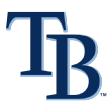 15. Richie Shaffer, 3B/OF/1B, Tampa Bay Rays: Shaffer's natural position is third base, but he's blocked there by Evan Longoria, who has missed only four games in the past three years after a couple of seasons wrecked by injuries. So barring a DL stint for Longoria, Shaffer's best shot to play is on the other three corners, where the Rays are far from set. He could platoon with Corey Dickerson in left field or James Loney at first base, or he could seize the right-field job from Steven Souza Jr. If Shaffer plays, he'll offer a lot of what you saw from him after his call-up last year: a low average with lots of walks, homers and strikeouts.
15. Richie Shaffer, 3B/OF/1B, Tampa Bay Rays: Shaffer's natural position is third base, but he's blocked there by Evan Longoria, who has missed only four games in the past three years after a couple of seasons wrecked by injuries. So barring a DL stint for Longoria, Shaffer's best shot to play is on the other three corners, where the Rays are far from set. He could platoon with Corey Dickerson in left field or James Loney at first base, or he could seize the right-field job from Steven Souza Jr. If Shaffer plays, he'll offer a lot of what you saw from him after his call-up last year: a low average with lots of walks, homers and strikeouts.
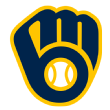 16. Zach Davies, RHP, Milwaukee Brewers: Nominally the Brewers' sixth starter right now, Davies merely has to beat out Matt Garza (who lost his rotation spot last year) and fellow rookie Jorge Lopez to claim a place in the Brewers' rotation to begin the year. He's pretty much what you saw last year in his six major-league starts: a major-league-ready strike-thrower with a good changeup but who's likely to be homer-prone and doesn't have a real out pitch. He could be a good fifth starter, but Lopez is the one here with the long-term upside.
16. Zach Davies, RHP, Milwaukee Brewers: Nominally the Brewers' sixth starter right now, Davies merely has to beat out Matt Garza (who lost his rotation spot last year) and fellow rookie Jorge Lopez to claim a place in the Brewers' rotation to begin the year. He's pretty much what you saw last year in his six major-league starts: a major-league-ready strike-thrower with a good changeup but who's likely to be homer-prone and doesn't have a real out pitch. He could be a good fifth starter, but Lopez is the one here with the long-term upside.
 17. Marco Gonzales, LHP, St. Louis Cardinals: He's in the same situation as Davies -- the nominal sixth starter -- but on a contending club and behind five more established starters, so Gonzales' chance might not come until later in the season. It's hard to imagine the current five staying healthy, especially given recent arm injuries to Michael Wacha and Jaime Garcia. I could see Gonzales getting 20-22 starts this year and performing much better than he did in 2014.
17. Marco Gonzales, LHP, St. Louis Cardinals: He's in the same situation as Davies -- the nominal sixth starter -- but on a contending club and behind five more established starters, so Gonzales' chance might not come until later in the season. It's hard to imagine the current five staying healthy, especially given recent arm injuries to Michael Wacha and Jaime Garcia. I could see Gonzales getting 20-22 starts this year and performing much better than he did in 2014.
 18. Tyler Goeddel, OF, Philadelphia Phillies: The first pick in the Rule 5 draft in December, Goeddel might not be very good in 2016, jumping from Double-A (where he hit .279/.350/.433 at age 22 last year) to the majors, but if he makes the club, he's going to play quite a bit. The Phillies' only established starter in the outfield is Odubel Herrera, whom they took in the Rule 5 draft the previous December, only to have him hit .297/.344/.418 and lead the team in WAR. Goeddel is probably worth keeping on the roster all year, and the Phillies have already shown they'll give a Rule 5 pick the chance to play more if he produces.
18. Tyler Goeddel, OF, Philadelphia Phillies: The first pick in the Rule 5 draft in December, Goeddel might not be very good in 2016, jumping from Double-A (where he hit .279/.350/.433 at age 22 last year) to the majors, but if he makes the club, he's going to play quite a bit. The Phillies' only established starter in the outfield is Odubel Herrera, whom they took in the Rule 5 draft the previous December, only to have him hit .297/.344/.418 and lead the team in WAR. Goeddel is probably worth keeping on the roster all year, and the Phillies have already shown they'll give a Rule 5 pick the chance to play more if he produces.
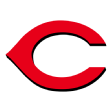 19. Jesse Winker, OF, Cincinnati Reds: He's a better option right now than any of the left-field options the Reds have in camp, and would give the team another on-base threat they sorely need. However, Yorman Rodriguez is out of options, and the Reds might choose to keep him rather than expose him to waivers, which would hurt Winker's chances of making the club. I like Rodriguez and think there's still value there, but Winker should get the majority of at-bats in left for the major-league team this year.
19. Jesse Winker, OF, Cincinnati Reds: He's a better option right now than any of the left-field options the Reds have in camp, and would give the team another on-base threat they sorely need. However, Yorman Rodriguez is out of options, and the Reds might choose to keep him rather than expose him to waivers, which would hurt Winker's chances of making the club. I like Rodriguez and think there's still value there, but Winker should get the majority of at-bats in left for the major-league team this year.
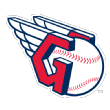 20. Tyler Naquin, CF, Cleveland Indians: There isn't a true center fielder with major-league experience on the Tribe's 40-man roster, and no, Rajai Davis doesn't count since he's not good enough defensively out there. Naquin is more than good enough defensively, and they could bat him eighth or ninth and get plenty of value from his glove and arm, although I think he can put the ball in play enough to let his speed generate value on the bases, too.
20. Tyler Naquin, CF, Cleveland Indians: There isn't a true center fielder with major-league experience on the Tribe's 40-man roster, and no, Rajai Davis doesn't count since he's not good enough defensively out there. Naquin is more than good enough defensively, and they could bat him eighth or ninth and get plenty of value from his glove and arm, although I think he can put the ball in play enough to let his speed generate value on the bases, too.
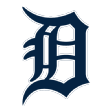 21. Michael Fulmer, RHP, Detroit Tigers: The Tigers seem very likely to need extra starter depth during the season, and though they have extra guys like Matt Boyd and Shane Greene hanging around, Fulmer is going to be their best option by midyear. It's hard to imagine them getting enough value from Mike Pelfrey, or enough starts from Anibal Sanchez and Justin Verlander, that Fulmer won't get a call by early summer.
21. Michael Fulmer, RHP, Detroit Tigers: The Tigers seem very likely to need extra starter depth during the season, and though they have extra guys like Matt Boyd and Shane Greene hanging around, Fulmer is going to be their best option by midyear. It's hard to imagine them getting enough value from Mike Pelfrey, or enough starts from Anibal Sanchez and Justin Verlander, that Fulmer won't get a call by early summer.
 22. Trayce Thompson, CF, Dodgers: If Joc Pederson doesn't hit, I don't think the Dodgers will hang with him for long, considering Thompson has a similar skill set with better defense.
22. Trayce Thompson, CF, Dodgers: If Joc Pederson doesn't hit, I don't think the Dodgers will hang with him for long, considering Thompson has a similar skill set with better defense.
 23. A.J. Reed, 1B/DH, Astros: White has the better chance to make the Opening Day roster, as noted earlier, but I'll bet Reed continues to rake at Triple-A and all but force the Astros to call him up in July to bolster the roster for a playoff run. Jonathan Singleton is probably facing his last chance with Houston with White and Reed coming up behind him so quickly.
23. A.J. Reed, 1B/DH, Astros: White has the better chance to make the Opening Day roster, as noted earlier, but I'll bet Reed continues to rake at Triple-A and all but force the Astros to call him up in July to bolster the roster for a playoff run. Jonathan Singleton is probably facing his last chance with Houston with White and Reed coming up behind him so quickly.
 24. Reynaldo Lopez, RHP, Nationals: With Drew Storen gone, the Nats have a weak spot in their bullpen from the middle-relief corps to Jonathan Papelbon, and Lopez, who spent last year as a starter in high-A, might be their best option, considering he has a fastball that's already 95-99 mph in the rotation and impressive control. He's not the same caliber of prospect as Lucas Giolito, but he might get there faster because he profiles best in the bullpen.
24. Reynaldo Lopez, RHP, Nationals: With Drew Storen gone, the Nats have a weak spot in their bullpen from the middle-relief corps to Jonathan Papelbon, and Lopez, who spent last year as a starter in high-A, might be their best option, considering he has a fastball that's already 95-99 mph in the rotation and impressive control. He's not the same caliber of prospect as Lucas Giolito, but he might get there faster because he profiles best in the bullpen.
 25. Sam Tuivailala, RHP, Cardinals: Just a gut feel pick on this one. Tuivailala is up to 100 mph, flashes a plus slider and missed more bats in August and September last year as the slider seemed tighter. Relievers often come out of nowhere, and I can't pretend to know that Tuivailala is going to make that leap this year. I just like what I've seen so far, and I know the Cardinals give opportunities to their own young players.
25. Sam Tuivailala, RHP, Cardinals: Just a gut feel pick on this one. Tuivailala is up to 100 mph, flashes a plus slider and missed more bats in August and September last year as the slider seemed tighter. Relievers often come out of nowhere, and I can't pretend to know that Tuivailala is going to make that leap this year. I just like what I've seen so far, and I know the Cardinals give opportunities to their own young players.
Others to watch
Miguel Almonte, RHP, Kansas City Royals
Kyle Zimmer, RHP, Royals
Jorge Polanco, SS, Twins
Sean Manaea, LHP, Oakland Athletics
Nomar Mazara, OF, Rangers
Matt Reynolds, IF, Mets
A.J. Cole, RHP, Nationals
Orlando Arcia, SS, Brewers
Michael Reed, OF, Brewers
Austin Barnes, C/2B, Dodgers
